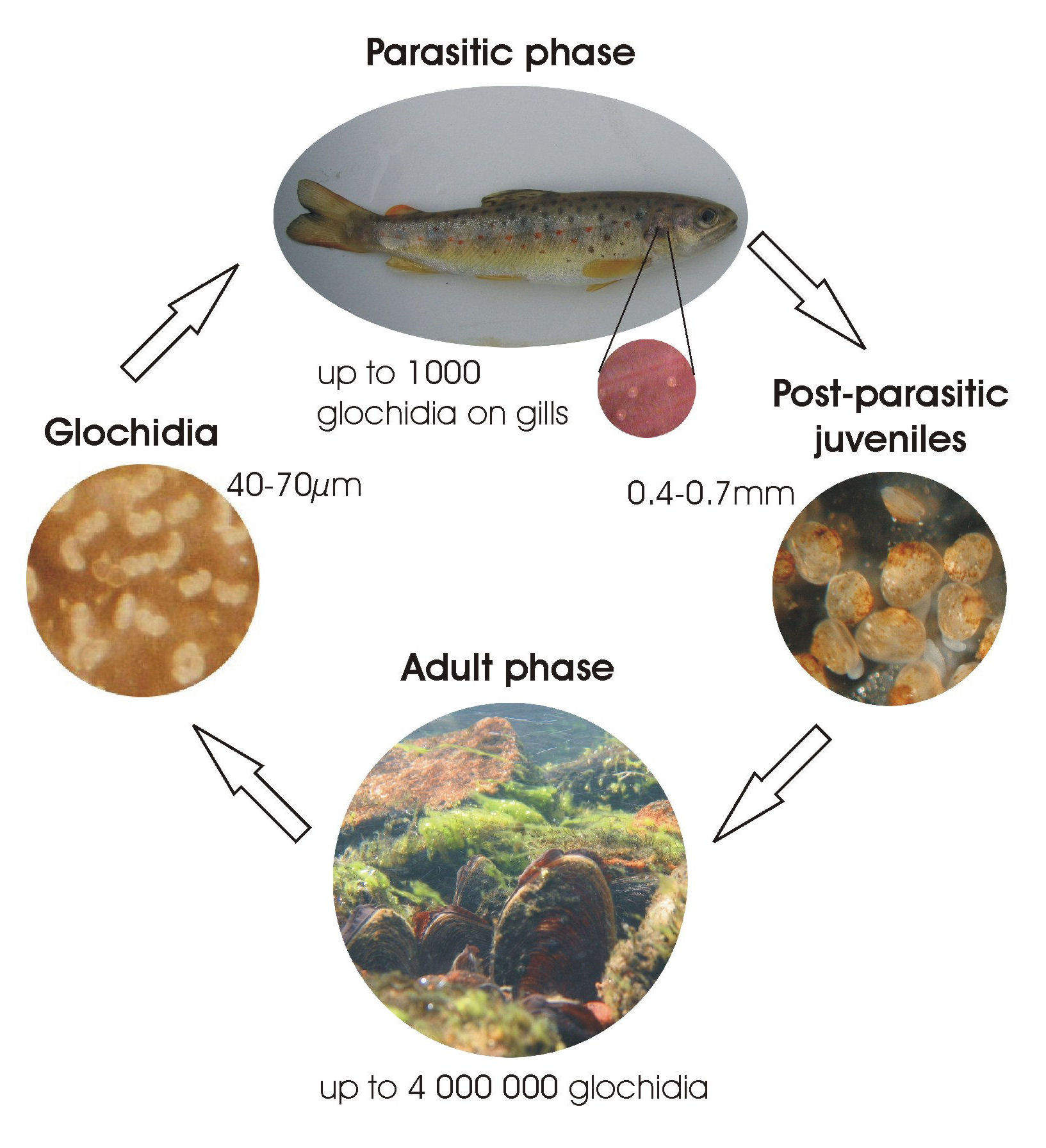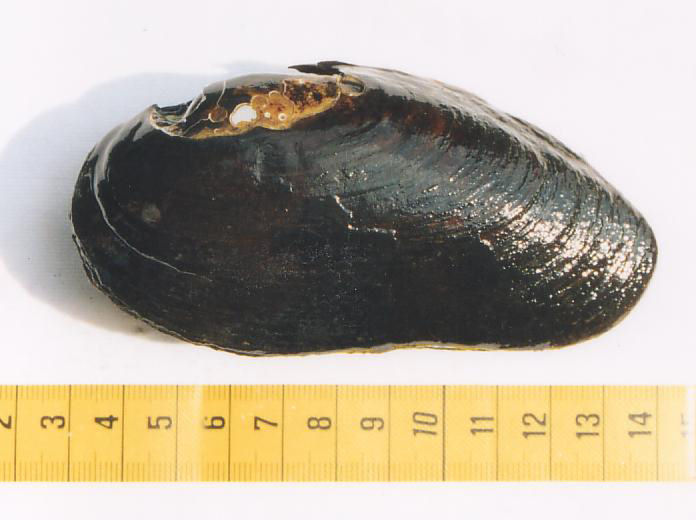 |
|
|
Conservation Genetics and Ecology of European Pearl
Mussels
The work of Annual Award Winner, Dr Juergen Geist, of the Technical
University of Munchen
|
 Despite
the fact that mollusc species play important roles in many aquatic ecosystems,
often little is known about their ecology, biodiversity and population
genetics. Freshwater pearl mussels (Margaritifera margaritifera
L.) are among the most critically endangered freshwater invertebrates,
facing serious population declines and local extinctions. Freshwater
pearl mussels are flagship, indicator, keystone and umbrella species.
They have a complex life cycle with specific habitat requirements during
different life stages. Thus, they can be seen as a model species for
designing conservation strategies in stream ecosystems. Despite
the fact that mollusc species play important roles in many aquatic ecosystems,
often little is known about their ecology, biodiversity and population
genetics. Freshwater pearl mussels (Margaritifera margaritifera
L.) are among the most critically endangered freshwater invertebrates,
facing serious population declines and local extinctions. Freshwater
pearl mussels are flagship, indicator, keystone and umbrella species.
They have a complex life cycle with specific habitat requirements during
different life stages. Thus, they can be seen as a model species for
designing conservation strategies in stream ecosystems.
The goal of this study was to contribute knowledge for designing conservation
strategies for the species by combining conservation genetics and ecological
investigations.
Altogether 14 polymorphic microsatellite markers were developed for
M. margaritifera, representing the first published
microsatellite markers for a European freshwater bivalve mollusc (order
Unionoida). The markers revealed wide ranges of allelic richness and
heterozygosity levels and proved to be suitable for monitoring of neutral
genetic divergence and diversity for describing the current genetic
structure of pearl mussel populations.
The genetic diversity and differentiation of the last and most important
central European pearl mussel populations from the drainages of Elbe,
Danube, Rhine, Maas and Weser were assessed in order to determine conservation
units (CUs), to select priority populations for conservation, and to
deduce conservation strategies on a genetic basis for free-living populations
and for supportive breeding. A highly fragmented population structure
and different levels of genetic diversity within populations were detected.
This observation can most likely be explained by historic, demographic
and anthropogenic effects.
The methodology of non-destructive sampling with no impact on living
populations was established for pearl mussel DNA-analyses (dead individuals
and haemolymph sampling). In addition, the successful use of shell-DNA
was demonstrated. The potential for using mollusc shells in DNA-based
analyses and the required precautions and limitations to avoid erroneous
results were discussed.
This study also explored the potential of separating annual growth increments
of pearl mussel shell carbonate layers, and their suitability as long-term
archives for up to 100 years. Stable isotope investigations of inner
nacreous and outer prismatic shell carbonate increments demonstrate
that pearl mussel d13C shell carbonate signatures record individual
metabolic signals extending over several years and that a high percentage
of respiratory CO2 (community and mussel respiration) contributed
to shell aragonite formation. In combination with d15N signatures
of mussel tissues and potential food sources, these analyses allowed
an assessment of the trophic level and of the origin of the mussel diet.

The study on the status of host fish populations and on fish species
richness in European pearl mussel populations characterised typical
fish communities in pearl mussel streams and revealed that a lack of
host fish only seems to be limiting pearl mussel reproduction in specific
areas. Intact and functional pearl mussel populations were found to
occur under extremely oligotrophic conditions with lower host fish densities
and biomasses than in disturbed central European populations without
juvenile recruitment. The effects of stocking measures with glochidia
infected host fish as a conservation strategy were discussed.
Due to the pearl mussels´ wide geographical distribution, their
complex life cycle and extraordinary reproductive strategy, the global
phenomenon of serious decline can have different and multiple reasons
in different regions. Conservation strategies in general and those for
freshwater pearl mussels in particular can greatly benefit from a holistic
and combined approach of integrating conservation genetics and ecological
studies. Such strategies retain a maximum of the species´ biodiversity
and evolutionary potential on the one hand, and try to identify specific
habitat requirements during all stages of the life cycle and restore
the habitat on the other hand. Conservation strategies for pearl mussels
can be key examples for the development of conservation strategies for
other aquatic organisms and the ecosystem functioning upon which they
depend. Generally, conservation efforts should move away from single
species and pattern protection towards process and persistence conservation
for ecosystems.

Present occupation:
Juergen Geist´s general research focus lies in the fields of
Aquatic Ecology, Molecular Ecology, Ecotoxicology, Conservation Genetics
and Evolutionary Functional Genomics with a specialisation on mussel
and fish species. At present, Juergen is a Postdoctoral Research Scholar
in the field of ecotoxicogenomics at the Aquatic Toxicology Laboratory,
Department of Anatomy, Physiology and Cell Biology at the University
of California in Davis, USA. His current project on “Evolutionary
Functional Genomics in Aquatic Environments” includes field and
laboratory research on the sublethal effects of stress response in aquatic
species, with a main focus on changes in gene expression patterns at
the mRNA and protein level. He also teaches a graduate course in “Aquatic
Ecology and Conservation” at the Technische Universitaet Muenchen,
Germany.
|
